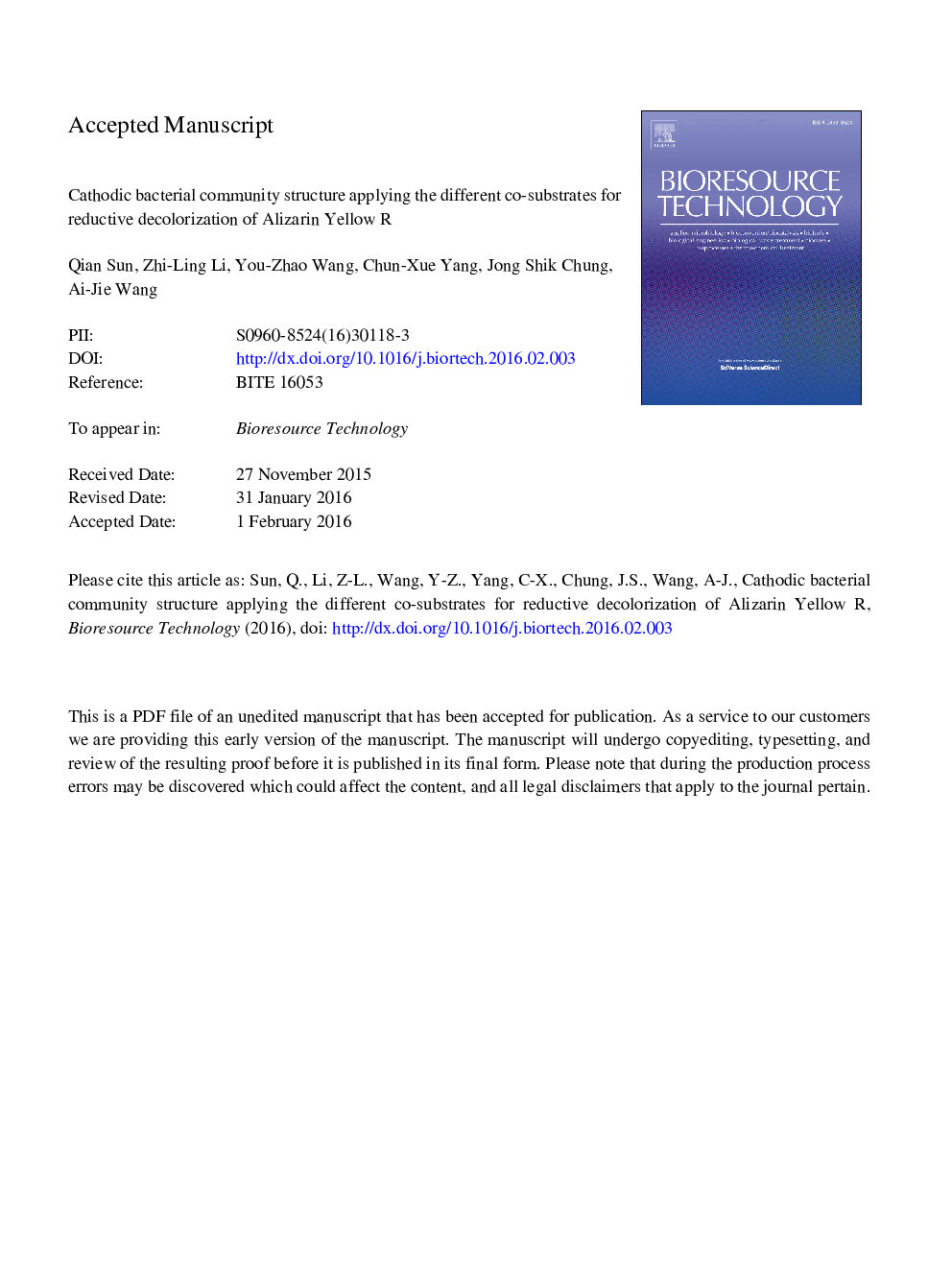| کد مقاله | کد نشریه | سال انتشار | مقاله انگلیسی | نسخه تمام متن |
|---|---|---|---|---|
| 679224 | 1459935 | 2016 | 30 صفحه PDF | دانلود رایگان |
عنوان انگلیسی مقاله ISI
Cathodic bacterial community structure applying the different co-substrates for reductive decolorization of Alizarin Yellow R
دانلود مقاله + سفارش ترجمه
دانلود مقاله ISI انگلیسی
رایگان برای ایرانیان
کلمات کلیدی
موضوعات مرتبط
مهندسی و علوم پایه
مهندسی شیمی
تکنولوژی و شیمی فرآیندی
پیش نمایش صفحه اول مقاله

چکیده انگلیسی
Selective enrichment of cathodic bacterial community was investigated during reductive decolorization of AYR fedding with glucose or acetate as co-substrates in biocathode. A clear distinction of phylotype structures were observed between glucose-fed and acetate-fed biocathodes. In glucose-fed biocathode, Citrobacter (29.2%), Enterococcus (14.7%) and Alkaliflexus (9.2%) were predominant, and while, in acetate-fed biocathode, Acinetobacter (17.8%) and Achromobacter (6.4%) were dominant. Some electroactive or reductive decolorization genera, like Pseudomonas, Delftia and Dechloromonas were commonly enriched. Both of the higher AYR decolorization rate (kAYRÂ =Â 0.46) and p-phenylenediamine (PPD) generation rate (kPPDÂ =Â 0.38) were obtained fed with glucose than acetate (kAYRÂ =Â 0.18; kPPDÂ =Â 0.16). The electrochemical behavior analysis represented a total resistance in glucose-fed condition was about 73.2% lower than acetate-fed condition. The different co-substrate types, resulted in alteration of structure, richness and composition of bacterial communities, which significantly impacted the performances and electrochemical behaviors during reductive decolorization of azo dyes in biocathode.
ناشر
Database: Elsevier - ScienceDirect (ساینس دایرکت)
Journal: Bioresource Technology - Volume 208, May 2016, Pages 64-72
Journal: Bioresource Technology - Volume 208, May 2016, Pages 64-72
نویسندگان
Qian Sun, Zhi-Ling Li, You-Zhao Wang, Chun-Xue Yang, Jong Shik Chung, Ai-Jie Wang,